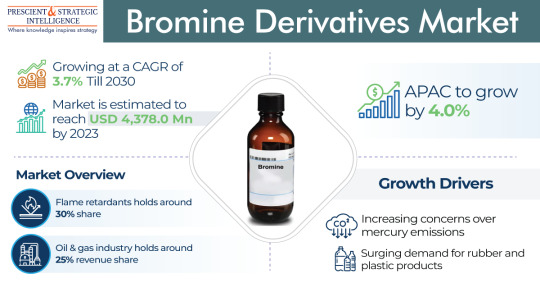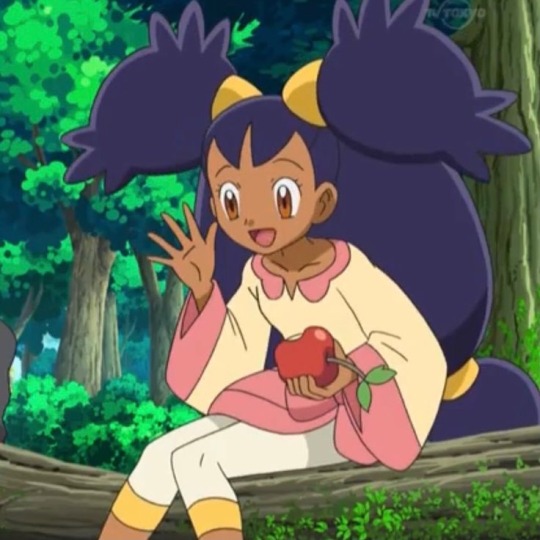#Regional analysis
Explore tagged Tumblr posts
Text
Bangladesh QSR Market Report: Trends, Analysis, and Growth Insights | P&S Intelligence
The value of the Bangladeshi quick-service restaurants market stood at USD 1,712.4 million in 2023, and this number is projected to reach USD 2,653.4 million by 2030, advancing at a CAGR of 7.1% during 2023–2030. This growth can be credited to the developing lifestyle of the adult populace, the increasing count of QSRs in the nation, the growing demand for fast food among the urban populace, and the rising working populace in the city and semi-urban areas of the country.

The demand for easy foods is increasing quickly among customers in Bangladesh, due to the parallel variations in the working and social lives and the mounting habit of dining out. People these days like to socialize over good food, away from the house. Therefore, because of the shortage of time, numerous contemporary nuclear families tend to choose convenient, quick meals over old-style meals.
American cuisine is likely to advance at the highest rate during this decade. This is because of the high requirement for fries, pizzas, and burgers among the young populace as well as the busy lifestyle of adults, which makes a requirement for convenience foods. Furthermore, other cuisines like Italian, Mexican, and Chinese, are also broadly prevalent among Bangladeshi citizens.
Moreover, the rising purchasing power of customers with their increasing per capita income, particularly in Dhaka, has boosted the sale of prepared food from QSRs in this nation. Bangladesh's economy is facing an era of low inflation, rising household income, and speedy progress.
As per the World Bank, Bangladesh has a purchasing power parity of 32.1 LCU per international dollar in 2021, in comparison to 16.3 LCU in 2002, advancing at a 3.63% average annual rate.
Furthermore, people, now, socialize with friends, neighbors, or colleagues, as compared to before for social or business purposes. This led to the increasing consumption of meals in fast food settings, which further boosted the industry.
#Bangladesh QSR Market#Market Report#P&S Intelligence#Fast Food Industry#Trends#Analysis#Growth Insights#Quick Service Restaurants#Market Dynamics#Food and Beverage Market#Market Research#Industry Overview#Competitive Analysis#Regional Analysis#QSR Market Size#Market Outlook#Dining Trends
2 notes
·
View notes
Text
Comprehensive Analysis of the Agricultural Surfactants Market: Trends, Growth Factors, and Future Outlook
Introduction to Agricultural Surfactants
Agricultural surfactants play a critical role in modern agriculture. These compounds are essential in enhancing the effectiveness of pesticides and herbicides, leading to more efficient crop protection and growth. Understanding the dynamics of the agricultural surfactants market is crucial for stakeholders aiming to optimize their agricultural practices and investments.
What are Agricultural Surfactants?
Agricultural surfactants are chemical agents that reduce the surface tension between liquids or between a liquid and a solid. By improving the spreadability and coverage of pesticides and herbicides, these surfactants ensure that the active ingredients are more evenly distributed over plant surfaces. This enhances the penetration and effectiveness of these chemicals, leading to improved pest and weed control.
Types of Agricultural Surfactants
There are several types of agricultural surfactants, each with unique properties and applications:
Nonionic Surfactants: These surfactants do not ionize in water or aqueous solutions, making them versatile and effective under a wide range of conditions. They are commonly used in herbicides and pesticides.
Anionic Surfactants: These surfactants ionize in solution and are often used in formulations requiring a high degree of wetting action.
Cationic Surfactants: Primarily used in post-emergent herbicides, these surfactants carry a positive charge and are effective in specific applications.
Amphoteric Surfactants: These surfactants can function as either anionic or cationic, depending on the pH of the solution. They are used in specialized applications requiring a balance of properties.
Market Dynamics and Growth Factors
Increasing Demand for Food Security
The growing global population and the subsequent increase in food demand drive the agricultural surfactants market. With limited arable land, maximizing crop yield through efficient pesticide and herbicide application becomes essential.
Technological Advancements
Advancements in agricultural technology have led to the development of more effective and environmentally friendly surfactants. These innovations cater to the demand for sustainable agriculture practices, boosting market growth.
Environmental Regulations
Stringent environmental regulations are shaping the market. There is a significant push towards the development of biodegradable and less toxic surfactants to minimize environmental impact. Companies are investing in research and development to create products that comply with these regulations while maintaining effectiveness.
Economic Factors
Economic factors, including the cost of raw materials and the overall economic health, influence the agricultural surfactants market. Fluctuations in oil prices, for example, can impact the cost of producing synthetic surfactants, thereby affecting market prices and availability.
Regional Analysis of the Agricultural Surfactants Market
North America
North America holds a significant share of the agricultural surfactants market. The presence of large agricultural operations and the adoption of advanced farming techniques contribute to the high demand for surfactants. Additionally, stringent environmental regulations in the United States and Canada drive the need for innovative and sustainable surfactant solutions.
Europe
Europe is another major market for agricultural surfactants, with a strong emphasis on sustainable and organic farming practices. The European Union’s stringent regulations on chemical usage in agriculture promote the adoption of eco-friendly surfactants. Countries like Germany, France, and the Netherlands are leading consumers in this region.
Asia-Pacific
The Asia-Pacific region is experiencing rapid growth in the agricultural surfactants market, driven by the increasing population and rising food demand. Countries such as China, India, and Japan are investing heavily in agricultural technologies to enhance crop yields, which in turn fuels the demand for surfactants. The region’s diverse climatic conditions also necessitate the use of specialized surfactants to address different agricultural challenges.
Latin America
Latin America is emerging as a significant market for agricultural surfactants, with Brazil and Argentina being the primary contributors. The region's extensive agricultural lands and focus on improving crop productivity drive the demand for surfactants. Additionally, favorable government policies and initiatives to boost agricultural output support market growth.
Middle East and Africa
The Middle East and Africa region shows potential for growth in the agricultural surfactants market. While the market is currently smaller compared to other regions, increasing investments in agriculture and the adoption of modern farming practices are expected to boost demand for surfactants.
Key Players in the Agricultural Surfactants Market
Several key players dominate the agricultural surfactants market, focusing on innovation, sustainability, and expanding their market reach:
BASF SE
The Dow Chemical Company
Akzo Nobel N.V.
Evonik Industries AG
Solvay S.A.
Clariant International Ltd.
Helena Chemical Company
Nufarm Limited
These companies are investing in research and development to create new and improved surfactant products that meet the evolving needs of the agricultural sector.
Challenges and Opportunities
Challenges
Environmental Concerns: Addressing the environmental impact of surfactants is a major challenge. Companies must develop products that are effective yet environmentally friendly.
Cost of Raw Materials: Fluctuating prices of raw materials can affect the production cost and pricing of surfactants, posing a challenge for manufacturers.
Regulatory Compliance: Adhering to diverse and stringent regulations across different regions can be complex and costly for manufacturers.
Opportunities
Biodegradable Surfactants: Developing biodegradable and less toxic surfactants presents a significant opportunity for market growth, catering to the demand for sustainable agriculture.
Technological Innovation: Continuous advancements in surfactant technology offer opportunities for creating more effective and specialized products.
Expanding Markets: Emerging markets, particularly in the Asia-Pacific and Latin America regions, offer substantial growth opportunities due to increasing agricultural activities and investments.
Future Outlook
The future of the agricultural surfactants market looks promising, with increasing demand for sustainable and efficient agricultural practices driving innovation and market growth. Companies focusing on environmentally friendly solutions and technological advancements are likely to gain a competitive edge.
Conclusion
The agricultural surfactants market is integral to modern agriculture, providing essential solutions for efficient and sustainable farming. Understanding market dynamics, regional trends, and the challenges and opportunities within this sector is crucial for stakeholders aiming to optimize their agricultural practices and investments.
#agricultural surfactants#crop protection#sustainable farming#pesticide effectiveness#market trends#biodegradable surfactants#regional analysis#market growth#agricultural technology#future outlook
0 notes
Text
Motor Lamination Market is Driven by Surging Vehicle Sales
The motor lamination market is estimated to touch USD 22.9 billion in 2023, which will increase to USD 32.0 billion, with a 4.9% compound annual growth rate, by 2030.
The progression of this industry is because of the rising sale of automobiles, particularly those employing electricity as the secondary or primary propulsion source, across the globe. Furthermore, automobile, as well as equipment safety standards, are increasing, which is further boosting the requirement for motor laminations.

Additionally, to reduce operational duration and decrease fabrication expenses, lamination sheets have experienced different variations with time. The significant advancement in lamination technologies to improve the performance of motors is essentially likely to boost the industry in the coming years.
The bonding category, based on technology, will propel at the fastest rate, of 5.3%, during this decade. This is because it removes the necessity for magnetic core rivet joints to lessen interlaminar loss.
To download free sample pages of this report@ https://www.psmarketresearch.com/market-analysis/motor-lamination-market-report/report-sample
Moreover, bonded cores don’t create hum sound, because of their exceptional thermal conductivity. Also, this technology is extensively employed because of its flexibility for personalized necessities.
Whereas, the welding category is also advancing at a significant rate, because of the employment of this procedure to manufacture strong and durable motors, by incorporating laminations together. Welding provides stronger efficiency, cost-effectiveness, and production to electric motors, the requirement for which is rising in practically every sector.
The silicon steel category, based on material type, is the largest contributor to the motor lamination market, with a 35% share. This is because it enhances the electrical resistivity, which means that it reduces the loss of current as well as decreases the conductivity.
The automotive category, based on industry, is the highest revenue contributor. This is because of the increasing need for comfortable and luxury automobiles with features like power steering & windows, retractable sunroofs, and HVAC equipment.
APAC is leading the industry, and it is further expected to remain leading, generating USD 10.3 billion, by 2030. This will be primarily because of the surge in the production of electric vehicles.
#Motor Lamination Market#Market Report#P&S Intelligence#Industry Trends#Analysis#Growth Forecasts#Market Dynamics#Electrical Motors#Lamination Materials#Global Motor Lamination Market#Market Research#Industry Overview#Competitive Analysis#Regional Analysis
0 notes
Text
Bromine Derivatives Market Report: Demand Analysis, and Growth Forecasts | P&S Intelligence
The bromine derivatives market was USD 4,378.0 million in 2023, which will rise to USD 5,614.1 million, powering at a 3.7% compound annual growth rate, by 2030.This is because of the extensive use of these chemicals in the pharmaceutical, construction, oil & gas, electronics, and automotive sectors, coupled with the growing requirement for plastic & rubber products. Moreover, the calcium bromide…

View On WordPress
#analysis#Bromine Derivatives Demand#Bromine Derivatives Market#Bromine Industry#Competitive Analysis#Global Bromine Derivatives Market#Growth Forecasts#Industry Overview#industry trends#Market dynamics#Market Insights#market outlook#Market Report#Market Research#P&S Intelligence#regional analysis
0 notes
Text
#Impact of Existing & Emerging Stand-Up on Rubber Process Oil Market Industry Trends#Segments#Regional Analysis#Key Players Profile [2023-2032]#intellectualmarketinsights
0 notes
Text
Air Electrode Battery Market Growth and Status Explored in a New Research Report, Trends Analysis Forecast 2017 - 2032
The Air Electrode Battery Market refers to the market for batteries that utilize air as one of the electrodes for energy storage. These batteries, also known as metal-air batteries, offer high energy density and have potential applications in electric vehicles, renewable energy storage, and portable electronics. Here's an overview of the Air Electrode Battery Market, including its current state, outlook, key factors, demand, and future forecast:
The Air Electrode Battery Market is experiencing growth and innovation as a result of the increasing demand for high-energy-density battery solutions. Air electrode batteries leverage the oxygen from the air to participate in the chemical reactions within the battery, which improves their energy storage capacity.
The global Air Electrode Battery Market size was worth around USD 1.51 billion in 2022 and is predicted to grow around USD 3.87 billion by 2032 with a compound annual growth rate of roughly 9.86% between 2023 and 2032.
Air Electrode Battery Market Growth: Air electrode batteries, also known as metal-air batteries, are a type of energy storage technology that uses oxygen from the air as a reactant at the cathode, which can enhance their energy density. Here are some factors contributing to the growth of the air electrode battery market:
Energy Density: Air electrode batteries have the potential for high energy density due to the use of oxygen from the air as one of the reactants. This makes them attractive for applications requiring longer-lasting and higher-capacity energy storage.
Renewable Energy Integration: As renewable energy sources like solar and wind power become more prevalent, the need for efficient and cost-effective energy storage solutions, such as air electrode batteries, increases to store excess energy for use when generation is low.
Electrification of Transportation: The electrification of various transportation modes, including electric vehicles and drones, drives the demand for advanced battery technologies with improved energy density and longer ranges.
Grid Storage: Air electrode batteries can be employed for grid-scale energy storage, providing stability and managing fluctuations in power supply and demand.
Research and Development: Ongoing research and development efforts aimed at improving battery efficiency, performance, and cost-effectiveness are expected to drive advancements in air electrode battery technology.
Status Explored in a New Research Report: A new research report exploring the status of the air electrode battery market would likely provide insights into several key areas:
Market Overview: An assessment of the current market size, major players, and geographic distribution of the air electrode battery market.
Technological Advancements: An exploration of recent technological developments, innovations, and breakthroughs in air electrode battery technology.
Applications: An analysis of the various applications of air electrode batteries, including grid storage, transportation, and other emerging sectors.
Challenges and Opportunities: Identification and discussion of challenges faced by the industry, such as efficiency improvements, cost reduction, and scale-up challenges, along with opportunities for growth.
Regulatory Landscape: Insights into relevant regulations, policies, and incentives that impact the adoption and deployment of air electrode batteries.
Trends Analysis and Forecasting: Trends analysis involves examining patterns and shifts in the market, technological landscape, consumer preferences, and other relevant factors. Forecasting considers various variables to project the future trajectory of the market, including:
Technological Developments: Anticipated advancements in air electrode battery technology and associated materials.
Market Demand: Projected demand for energy storage solutions, including air electrode batteries, across different sectors and regions.
Market Adoption: The rate at which air electrode batteries are being adopted in various applications, considering factors such as cost competitiveness and regulatory support.
Competitive Landscape: The emergence of new players, partnerships, and collaborations that could impact market dynamics.
Market Challenges: Potential obstacles that could affect the growth and deployment of air electrode batteries.
We recommend referring our Stringent datalytics firm, industry publications, and websites that specialize in providing market reports. These sources often offer comprehensive analysis, market trends, growth forecasts, competitive landscape, and other valuable insights into this market.
By visiting our website or contacting us directly, you can explore the availability of specific reports related to this market. These reports often require a purchase or subscription, but we provide comprehensive and in-depth information that can be valuable for businesses, investors, and individuals interested in this market.
“Remember to look for recent reports to ensure you have the most current and relevant information.”
Click Here, To Get Free Sample Report: https://stringentdatalytics.com/sample-request/air-electrode-battery-market/12772/
Market Segmentations:
Global Air Electrode Battery Market: By Company • Air Electrode Battery • Phinergy • Hitachi Maxell • Volkswagen Ag • AMPTRAN motor Corporation • Sanyo Electric, • BASF Global • Poly Plus Battery • Chem, • Changan Automobile Group • Arotech Corporation • Tesla Motors • BMW Ag • Bluecar Capricorn Venture Partners • Duracell • Daimler Ag Eos • General Motors • Hitachi Maxell • Honda Motor • Hyundai Motor • Mitsubishi Motors • Rayovac • Siepac • Sony Corporation • Terra Motors • Toyota Motor Corporation • Zaf Energy System • Fiat • Panasonic Energy • LG Global Air Electrode Battery Market: By Type • Primary (Non-rechargeable) • Secondary (Rechargeable) • Fuel Cells (Mechanical Rechargeable) Global Air Electrode Battery Market: By Application • Industry • Home Use Global Air Electrode Battery Market: Regional Analysis The regional analysis of the global Air Electrode Battery market provides insights into the market's performance across different regions of the world. The analysis is based on recent and future trends and includes market forecast for the prediction period. The countries covered in the regional analysis of the Air Electrode Battery market report are as follows: North America: The North America region includes the U.S., Canada, and Mexico. The U.S. is the largest market for Air Electrode Battery in this region, followed by Canada and Mexico. The market growth in this region is primarily driven by the presence of key market players and the increasing demand for the product. Europe: The Europe region includes Germany, France, U.K., Russia, Italy, Spain, Turkey, Netherlands, Switzerland, Belgium, and Rest of Europe. Germany is the largest market for Air Electrode Battery in this region, followed by the U.K. and France. The market growth in this region is driven by the increasing demand for the product in the automotive and aerospace sectors. Asia-Pacific: The Asia-Pacific region includes Singapore, Malaysia, Australia, Thailand, Indonesia, Philippines, China, Japan, India, South Korea, and Rest of Asia-Pacific. China is the largest market for Air Electrode Battery in this region, followed by Japan and India. The market growth in this region is driven by the increasing adoption of the product in various end-use industries, such as automotive, aerospace, and construction. Middle East and Africa: The Middle East and Africa region includes Saudi Arabia, U.A.E, South Africa, Egypt, Israel, and Rest of Middle East and Africa. The market growth in this region is driven by the increasing demand for the product in the aerospace and defense sectors. South America: The South America region includes Argentina, Brazil, and Rest of South America. Brazil is the largest market for Air Electrode Battery in this region, followed by Argentina. The market growth in this region is primarily driven by the increasing demand for the product in the automotive sector.
Visit Report Page for More Details: https://stringentdatalytics.com/reports/air-electrode-battery-market/12772/
Reasons to Purchase Air Electrode Battery Market Report:
Market Insights: An Air Electrode Battery Market report provides comprehensive insights into the market, including market size, trends, growth drivers, challenges, and opportunities. It offers valuable information about the market dynamics, competitive landscape, and emerging technologies.
Industry Analysis: The report offers a detailed analysis of the Air Electrode Battery industry, including key market players, their market share, product portfolios, strategies, and recent developments. This helps stakeholders understand the competitive landscape and make informed business decisions.
Technology Trends: The report highlights the latest technological advancements in Air Electrode Batteries, such as electrode materials, cell designs, and manufacturing processes. It provides insights into emerging research and development activities, innovation trends, and future possibilities for the technology.
Market Forecast: The report includes future forecasts and projections, offering valuable insights into the market's expected growth, trends, and demand for Air Electrode Batteries. This helps businesses plan their strategies, investments, and production capacities accordingly.
Demand Assessment: The report provides a thorough assessment of the demand for Air Electrode Batteries, considering factors such as the growing electric vehicle market, renewable energy integration, and the need for high-energy-density battery solutions. This helps businesses understand the market demand and potential application areas for Air Electrode Batteries.
Competitive Analysis: The report offers a comprehensive analysis of the competitive landscape in the Air Electrode Battery Market. It includes information about key market players, their market share, product offerings, and business strategies. This helps businesses identify potential collaborations, partnerships, or acquisition opportunities.
Regulatory Environment: A market report provides an analysis of the regulations and policies affecting the Air Electrode Battery Market, such as government incentives, safety standards, and environmental regulations. This helps stakeholders understand the regulatory landscape and compliance requirements.
Investment Opportunities: By analyzing market trends and growth drivers, the report identifies potential investment opportunities in the Air Electrode Battery sector. It helps investors make informed decisions, allocate resources effectively, and identify partnerships or acquisition opportunities.
Technology Challenges and Solutions: The report highlights the challenges and barriers in the development and commercialization of Air Electrode Batteries. It provides insights into the ongoing research and development efforts, technological advancements, and potential solutions to overcome these challenges.
Strategic Decision Making: Overall, purchasing an Air Electrode Battery Market report equips stakeholders with valuable information and insights to make informed decisions, identify growth opportunities, mitigate risks, and stay competitive in the evolving market.
About US:
Stringent Datalytics offers both custom and syndicated market research reports. Custom market research reports are tailored to a specific client's needs and requirements. These reports provide unique insights into a particular industry or market segment and can help businesses make informed decisions about their strategies and operations.
Syndicated market research reports, on the other hand, are pre-existing reports that are available for purchase by multiple clients. These reports are often produced on a regular basis, such as annually or quarterly, and cover a broad range of industries and market segments. Syndicated reports provide clients with insights into industry trends, market sizes, and competitive landscapes. By offering both custom and syndicated reports, Stringent Datalytics can provide clients with a range of market research solutions that can be customized to their specific needs
Contact US:
Stringent Datalytics
Contact No - +1 346 666 6655
Email Id - [email protected]
Web - https://stringentdatalytics.com/
#Electric Vehicle Applications#Grid Storage#Innovation#Research and Development#Market Growth#Emerging Technologies#Market Dynamics#Competitive Landscape#Market Opportunities#Market Challenges#Environmental Impact#Global Market#Regional Analysis#Key Players#Market Drivers#Market Barriers#Technological Advancements#Future Prospects.
0 notes
Text

The Destroyer
#I may rb this with an overly detailed analysis on his tattoos#they have to do with one of the regions I’ve been worldbuilding#mcd#minecraft diaries#aphmau#aphmau mcd#minecraft diaries headcanons#aphmau minecraft diaries#mcd aphmau#aphblr#mcd lore#aphmau fanart#the divine warriors#divine warriors#shad the destroyer#irene#irene the matron#mystreet aphmau#aphmau shalashaska#aaron lycan
116 notes
·
View notes
Text
Say whatever you want about the black and white anime, but the one thing i will always stand by is that IRIS AND CILAN WERE NEVER PART OF THE PROBLEM!!!!

i did a full watch of the bw series a few weeks back, and the main 2 complaints i had about it were ash’s pokemon (he caught too many and most of them didn’t get enough screentime as a result) and team rocket (they were like barely there and didn’t even do the blasting off gag until the last season i think)
but for me the best parts of it were iris and cilan!!! i was kinda expecting them to be annoying cuz of all the hate they got, but i was pleasantly surprised at how enjoyable they were.

first off, i am the number 1 iris defender. all the posts i see that complain about her say the same thing everytime: “all iris does is say that ash is a little kid!”
well, as someone who’s binged the entire unova anime in like a week and a half, i can say that there is so much more to her. but for one, she doesn’t even say that ash is a kid as often as you might think. she mostly says it in the first few episodes when she first met ash. for the rest of the series, she’ll occasionally say it in passing, but it is not her one defining trait. while there are a few instances where i thought that it wasn’t warranted, there are plenty more times where ash was being big dummy and deserved it.
what people seem to forget about iris is that at the start of ash’s unova journey, iris is practically a new trainer. her axew is at most only a few weeks old, and her excadrill, while strong, hasn’t battled for who knows how long after being brutally defeated by drayden’s haxorous, leaving it in a state of shock. so obviously, she isn’t going to be the most experienced trainer out there.
iris grew up in the village of dragons, which as the name suggests, is a village inhabited by various dragon type pokemon. having spent her whole life surrounded by dragon types, iris has made it her dream to become a dragon type master. while at the beginning of her journey, she’s just with her axew, she over time has several encounters with dragon type pokemon, all of which help her better understand how to communicate with dragon types.
in one episode, she helped a druddigon out from a trap set by team rocket, while everyone else assumed it was rampaging out of anger. in another, the gang were helping out at a pokemon daycare, and in it was a deino, who was extremely shy. it’s trainer hadn’t returned for days after they said they would (the trainer ended up getting lost in a cave) and it was beginning to refuse to eat due to its anxiety. and what did iris do? she stayed with the deino the whole night, helping it relax in a place it wasn’t familiar with. it’s episodes like these that show that she’s not a one dimensional character, and like the rest of ash’s companions, she has character development.

but what helped fully flesh out her arc was when she caught her dragonite.
unlike axew, who was by her side from the beginning, she and dragonite did not get along immediately. dragonite was stubborn, wouldn’t listen to iris, and had its own way of battling. in order to become a dragon master, she would first have to understand dragonite. the trust that was built happened really slowly, but she did get there. by understanding a pokemon as troubled as her dragonite, iris would then be able to reach out and soothe her excadrill, making it confident enough to battle again, and help axew evolve after her journey with ash ended. and i think that was a solid way to end her arc until pokemon journeys, where offscreen, she fulfilled her dream as a dragon master and became the champion of unova.

now onto cilan.
cilan doesn’t get hated on nearly as much as iris, he’s more or less just forgotten about. so while i was expecting to hate iris when i first started watching, i had zero expectations on cilan. and tbh, i think he’s my favorite traveling companion?? if not than at least top 3.
cilan is the oldest of three siblings, and he first met ash and iris when ash came to battle at the triplet’s restaurant/gym. usually, the challenger only battles one of them, but ash was the first person to want to challenge all 3 brothers. when it was cilan’s turn to battle, he assumed that he would win due to him having the type advantage (ash choosing to battle with oshawott against cilan’s pansage)
well, ash won. and a few episodes later, cilan asked if he could join ash on his journey. the reason cilan wanted to come along was because he saw a new side to pokemon battling that he wanted to better understand.
something about cilan is that while he is a gym leader, he doubles as a pokemon connoisseur. a connoisseur is someone who makes critical judgements in fine arts or matters of taste. for cilan, he analyzes the bond between trainer and pokemon. and during his battle with ash, he evaluated his and oshawotts bond based on their battle. and he dug INTO ash, almost outright insulting his capabilities as a trainer, due to his assumptions from ash using a water type against a pansage.
but the thing is, cilan was wrong. in the end, oshawott ended up winning with ash’s strategy and support.
he fully expected to win, and was given an entirely new perspective of battling after seeing ash pull through. like cooking, pokemon battles aren’t just about type advantage and throwing moves out. it’s about thinking outside the box and trusting your pokemon, which ash accomplished by having oshawott use its scallchop to deflect a bullet seed attack. wanting to become a better trainer and connoisseur, cilan tagged along to gain a new understanding between trainer and pokemon.
and outside of his arc, cilan is just a genuinely fun character!!! did you know that along with being a pokemon connoisseur, this man is also a fishing, cooking, detective, judge, and film connoisseur??? and he can cook!! (EDIT: people are mentioning that he is also a train connoisseur!!! sorry :( i forgor)
cilan is shown to be more composed with his emotions than the previous traveling partners ash had. he also plays a mediator role whenever ash and iris bicker. and remember, cilan is the oldest sibling of 3 triplets, so he’s likely had to play mediator countless times if his brothers ever argued. ash and iris also seem to have a sibling-like bond, so their clashing was probably similar to what cilan faced before with cress and chili.

as i said, cilan is much more patient and gentleman-like. so the few moments where he genuinely loses his shit leaves a stronger impact.
the most notable example was with skyla, who instead of fulfilling her gym duties, played out battles in her head, and made her own judgements on if she could win a battle or not. this lead to challengers either being pushed away without a chance to battle, or given a gym badge without deserving it.
now cilan, who is a gym leader, sees this as a disgrace. it goes against everything a gym leader is supposed to do. skyla was lazy, arrogant, and wouldn’t do her job, which set him off. while he did lose against skyla, it was a big character moment to try and defend his honor as a gym leader.
overall, cilan is soooooo cool you guys don’t get him the way i do!!! i am the number 1 cilan fan!!!!

i think the reason people complain about iris and cilan more than any other companions ash had is because they were different.
iris had a completely different goal than everyone before her, it was a complete 180. she had zero interest in contests or performing, her dragon master dream was brand new in the anime. additionally, her relationship with ash was more like siblings than best friends, which likely made some viewers think their bickering was annoying.
and cilan. poor guy didn’t even have a chance from the start. not after brock was around for like a billion seasons.
overall, the black and white anime does have its problems, as does every pokemon anime. but leave iris and cilan out of it THEY ARE INNOCENT PARTIES :(
#pokemon#pokemon anime#pokemon journeys#pokemon iris#pokemon cilan#ash ketchum#pokemon black and white#unova region#unova#character analysis#analysis#rambles
100 notes
·
View notes
Text
Not to get pedantic (oh who am i kidding that’s most of this blog) but I am genuinely fascinated by the potential applications of the established canon in HoO and TOA that the gods canonically have both historic and regional forms, and can appear as specific versions of those forms and have kids of those specific forms, which influence what powers the kid has/what pantheon they fall under/etc etc (and also the implication that demigods can be born under multiple forms of a singular deity). This is somewhat backed up even earlier in the first series when we’re told that Percy has earthquake powers because of his father being Poseidon “The Earthshaker” (which is Mycenaean Poseidon) - which could also tie into why Percy generally takes leadership roles, is hopping in and out of the Underworld a lot, and is apparently particularly powerful for even just a Big 3 kid, since all that would line up with Mycenaean Poseidon being generally put at the head of the pantheon and also being a chthonic deity.
Now this gets really interesting when we start looking at deities being combined and conflated, because a.) the Romans weren’t the only ones doing that and b.) the Romans had their own gods originally, they didn’t just take the Greek ones and slap a new name on them. They merged a lot with their own preexisting deities alongside adopting worship of deities from other cultures as the Romans spread (and the Greeks also did this), and c.) the ancient Greeks and Romans did exist at the same time.
Like, we know in terms of the Greeks and Romans that if their godly parents are “equivalent” then their demigod children are siblings, just like if Greek demigods have the “same” godly parent then they are also siblings. However, very few Greco-Roman gods are one-to-one, and a lot are like three gods in a trench coat, and then if you want to get into historical forms then you can start running into weird things like “Well, if you go back far enough, these two Greek gods may have originated from the same thing-” and also if we’re talking historical forms, again, the Greeks and Romans existed at the same time! Which means there would be historic forms of godly parents that are both Greek and Roman! So like, where do we go from there? Would Hazel be equally siblings to a child of Plutus as she is to Nico because both Hades and Plutus were conflated into Pluto? Orcus was also conflated with Pluto - does that mean when Nico killed Bryce Lawrence, he was killing his half-brother? (cause then that parallels just a couple chapters later when Will faces off against Octavian-) Are there demigods who, depending on their godly parents’ form(s), are technically both a Greek and Roman demigod? If Hermes and Pan possibly originated from the same god, does that mean all the satyrs are siblings with the Hermes kids? If we want to get into all the nonsense of Dionysus’ origins and Zagreus and Hades, does that mean Nico is technically siblings with Dionysus kids? Does Dionysus joke about this during their therapy sessions? Are some demigods in certain cabins siblings with kids in other cabins but each others’ siblings aren’t siblings depending on what form their godly parents were in?
I have a headache now.
#pjo#riordanverse#percy jackson#chb#camp halfblood#camp half-blood#camp jupiter#analysis#meta#Percy gets tagged for the fun random analysis interjection#listen i think too much about the worldbuilding and how it relates to historical mythology RICK YOU BROUGHT THIS UPON YOURSELF-#i hear ''yeah the gods can appear in historical and regional forms'' and i am already writing stuff about it you cant stop me#listen. there were city-states where the MAIN PANTHEON WAS TOTALLY DIFFERENT#i wanna hear about demigods whose parents are from a *different pantheon format* and how confused they get by the CHB format#also the potential humor of two demigods going ''well technically im your sibling but you're not my sibling'' ''what'' ''nevermind''#also how does deities adopting demigods play into this. how confusing does Jason's family tree get#is it different depending on what form(s) specifically he was adopted by?#also also also - you could totally argue based on linguistics and stuff that Nico 100% never lied to the Romans#(at least about being Greek vs Roman) but that can be a post for another time
455 notes
·
View notes
Text
you know what baffles me even more? sjm is capable of writing characters doing objectively evil things and letting the reader form their own opinions about them. manon “the white demon” blackbeak killed hundreds, if not thousands of innocent crochans, yet i can’t think of anyone calling her a terrible person, now. and it’s not because “manon is actually a good person and totally had great reasons to kill all those crochans, so just forgive her” was shoved down our throats a gazillion times. the crochans didn’t trust her immediately even when she stated her intentions. she had to prove herself. she was allowed to progress as a (witch) person. honestly, rhysand’s character is done an enormous disservice by being sjm’s fave.
#it also helps that manon is only 80 and not the sovereign of a region#compared to rhys’ 500 and position as high lord of the largest court in prythian#acotar analysis#throne of glass#manon blackbeak#to avoid the other side#anti rhysand#anti sjm#edit: manon is 116-117 according to the wiki
144 notes
·
View notes
Text
“Demons' Reside Here Permanently” (A Short Poem)
But you deserve to be really happy
For your nose is the twitchiest, your tail the fluffiest
And your every breath swirls with heather
You go to school, you stay between the lines
Narrow and irritating as they are
This entire town should be eating out of your paw
But this place is a valley of shadows
At night, the skies are bruised a sinful purple
The elders claim angels bless the town
Hiding from your potential behind rotten rosaries
You just do not understand
You start the forest fires
You are the one who buries the wanderers
You even manage the extracurriculars
Yet no miracles sent from heaven have surfaced
Instead, ravens have begun to swarm your home
Watching with hungry eyes
Bloody baseball bats in hellish claw
As if they could ever touch you
With your sly eyes and smarter brain
And the sawed-off shotgun
You keep safe under the porch for emergencies
Just in case
#creative writing#poetry#my writing#cryptidcore#oddcore#weirdcore#american gothic#southern gothic#small town gothic#small town horror#character study#character analysis#regional gothic#cult vibes#cult horror#part of my monster animal series of poems i'm writing
10 notes
·
View notes
Text
APAC Solar Street Lighting Market Will Advance at a 16.4% CAGR
The APAC solar street lighting market was USD 2,315.9 million in 2023, which will rise to USD 6,691.2 million, advancing at a 16.4% CAGR, by 2030.
A key trend observed in this industry is the increasing acceptance of smart solar streetlights. Moreover, smart lighting systems are power-effective because they employ LED lights and offer distinctive sensors and control units in every lamp, which allow data communication to central controlling systems.

The centralized category, on the basis of structure type, led the industry. This can be because of the increasing on-grid based solar streetlight disposition that gets a constant electric source from a grid to fuel lights at a great illumination.
The solar panel category, based on component, was the largest contributor to the APAC solar street lighting market in 2023, with a 35% share. This can be because it is essential for the operation of entire street lighting via renewable energy.
The lamp category, on the other hand, will advance at the fastest compound annual growth rate in the coming years. This is mainly because of the increasing acceptance of LEDs in solar streetlights. The increasing emphasis on adopting LEDs is because of the rising government proposals in nations, such as China and India, for the acceptance of energy-effective LED lights.
China led the industry, and it is likely to advance at a 17.0% compound annual growth rate, in the coming years. This can be mainly because of the continuing building of several highways, streets, flyovers, and airports; and the increasing urbanization.
With the growing number of smart cities in this region, the APAC solar street lighting industry will advance continuously in the coming years.
#APAC Solar Street Lighting Market#Market Report#P&S Intelligence#Renewable Energy#Trends#Analysis#Growth Forecasts#Solar Lighting Solutions#Market Dynamics#Asia-Pacific Solar Market#Market Research#Industry Overview#Competitive Analysis#Regional Analysis#Solar Street Light Manufacturers#Market Outlook
0 notes
Text
Unlocking the Potential: A Comprehensive Overview of the Printing Ink Market
Introduction:
The printing ink market is a crucial component of the printing industry, supporting various sectors such as packaging, publishing, commercial printing, and more. As technology continues to evolve and environmental concerns gain prominence, the printing ink market is experiencing significant shifts. This comprehensive overview delves into the key aspects shaping the printing ink market landscape.
Market Analysis:
The printing ink market is witnessing steady growth, driven by advancements in printing technology and the increasing demand for printed materials across industries. With the rise of digital printing, there is a growing need for high-quality, versatile printing inks compatible with diverse printing processes.
Industry Trends:
Several trends are influencing the printing ink market, including:
Shift Towards Digital Printing: Digital printing technologies are gaining traction due to their efficiency, customization capabilities, and reduced setup times. This trend is driving the demand for digital inks tailored for various substrates.
Sustainability: Environmental concerns are driving the development of eco-friendly printing inks formulated with renewable resources and fewer volatile organic compounds (VOCs). Manufacturers are focusing on sustainable ink formulations to meet regulatory requirements and consumer preferences.
Innovation: Continuous innovation in ink formulations is enhancing print quality, durability, and compatibility with different substrates. Nano-based inks, UV-curable inks, and specialty inks are among the innovations driving market growth.
Emerging Markets: Emerging economies are witnessing rapid industrialization and urbanization, leading to increased demand for printed materials across sectors such as packaging, textiles, and advertising. This presents lucrative opportunities for ink manufacturers to expand their presence in these regions.
Ink Types:
Printing inks are categorized based on their formulation and application, including:
Lithographic Inks: Used in offset printing for high-quality commercial printing applications such as magazines, catalogs, and brochures.
Flexographic Inks: Ideal for packaging printing due to their ability to adhere to various substrates and withstand the rigors of packaging processes.
Gravure Inks: Commonly used in high-speed printing processes for packaging materials, labels, and flexible packaging.
Digital Inks: Specifically designed for digital printing technologies such as inkjet and electrophotography, offering quick drying times and vibrant colors.
Market Size and Regional Analysis:
The printing ink market is geographically diverse, with key regions including North America, Europe, Asia Pacific, Latin America, and the Middle East & Africa. Asia Pacific dominates the market due to the presence of major manufacturing hubs and the growing demand for printed packaging in countries like China and India. North America and Europe are also significant markets, driven by technological advancements and sustainability initiatives.
Growth Drivers:
Key factors driving the growth of the printing ink market include:
Rise in Packaging Industry: The booming packaging industry, driven by e-commerce, food & beverage, and consumer goods sectors, is fueling the demand for high-quality printing inks for packaging applications.
Technological Advancements: Continuous innovation in printing technology, including digital printing and inkjet technology, is expanding the scope of applications for printing inks and driving market growth.
Increasing Demand for Customization: Consumers are increasingly seeking personalized and customized products, driving the need for printing solutions that offer flexibility and customization capabilities.
Conclusion:
The printing ink market is undergoing a transformation, driven by technological advancements, sustainability initiatives, and evolving consumer preferences. As the industry embraces digitalization and environmental consciousness, ink manufacturers are innovating to meet the demands of a dynamic market landscape. By staying abreast of industry trends and investing in research and development, stakeholders can unlock the full potential of the printing ink market.
#Printing Ink#Market Analysis#Industry Trends#Printing Technology#Ink Types#Growth Drivers#Market Size#Regional Analysis#Sustainability#Digital Printing#Packaging Industry#Environmental Regulations#Innovation#Emerging Markets
0 notes
Text
one thing i commend side order for is helping to kinda. break down the "octarian domes are dystopian hellscape" interpretations i see everywhere
like yeah the propaganda is still there, but it always has been. that's how you install wariness of the dangerous outside world in your people and keep them close, and safe, after everything. but like.
we do see that there's room for individuality and that people are given basic humanoid rights down there. there's enough fondness for their leader that he's talked about as a cantankerous silly old guy and with respect. maybe acht shouldn't be playing music in the wrong physical locations and maybe they should pay attention in class, but...
it's not a hellscape.
(and it always makes me very uncomfortable when it's depicted that way, both for the political+historical stuff going on w the octarians, and because their leader does genuinely seem to care.)
it's just a very different world that, in the face of the modern day and the re-awakened desire to see the surface again, is often not enough anymore.
and even there, we learn that, yeah, some people are okay living there and genuinely prefer its stability to the changing, chaotic rest of the world.
and that's valid, too.
#side order#side order spoilers#marine.txt#like yeah a lot of the new generation WANTED out and the inkantation pushed them#but it's not that simple. it never was#especially after the history of the region and how there's clear allusions to historical revisionism.#plot analysis
12 notes
·
View notes
Text
Cross-Linked Polyethylene Market Report: Trends Analysis, and Growth Forecasts | P&S Intelligence
The cross-linked polyethylene market is anticipated to achieve a revenue of USD 7,544.8 million by the conclusion of 2023. It is projected to experience a compound annual growth rate (CAGR) of 7.7% from 2024 to 2030, reaching a total of USD 12,587.5 million by 2030. During the projection period, the automotive is projected to be the fastest-growing category, with a CAGR of 8.0%, on the basis of…

View On WordPress
#analysis#Competitive Analysis#Cross-Linked Polyethylene Demand#Cross-Linked Polyethylene Market#Global Cross-Linked Polyethylene Market#Growth Forecasts#Industry Overview#industry trends#Market dynamics#Market Insights#market outlook#Market Report#Market Research#P&S Intelligence#Polyethylene Industry#regional analysis
0 notes